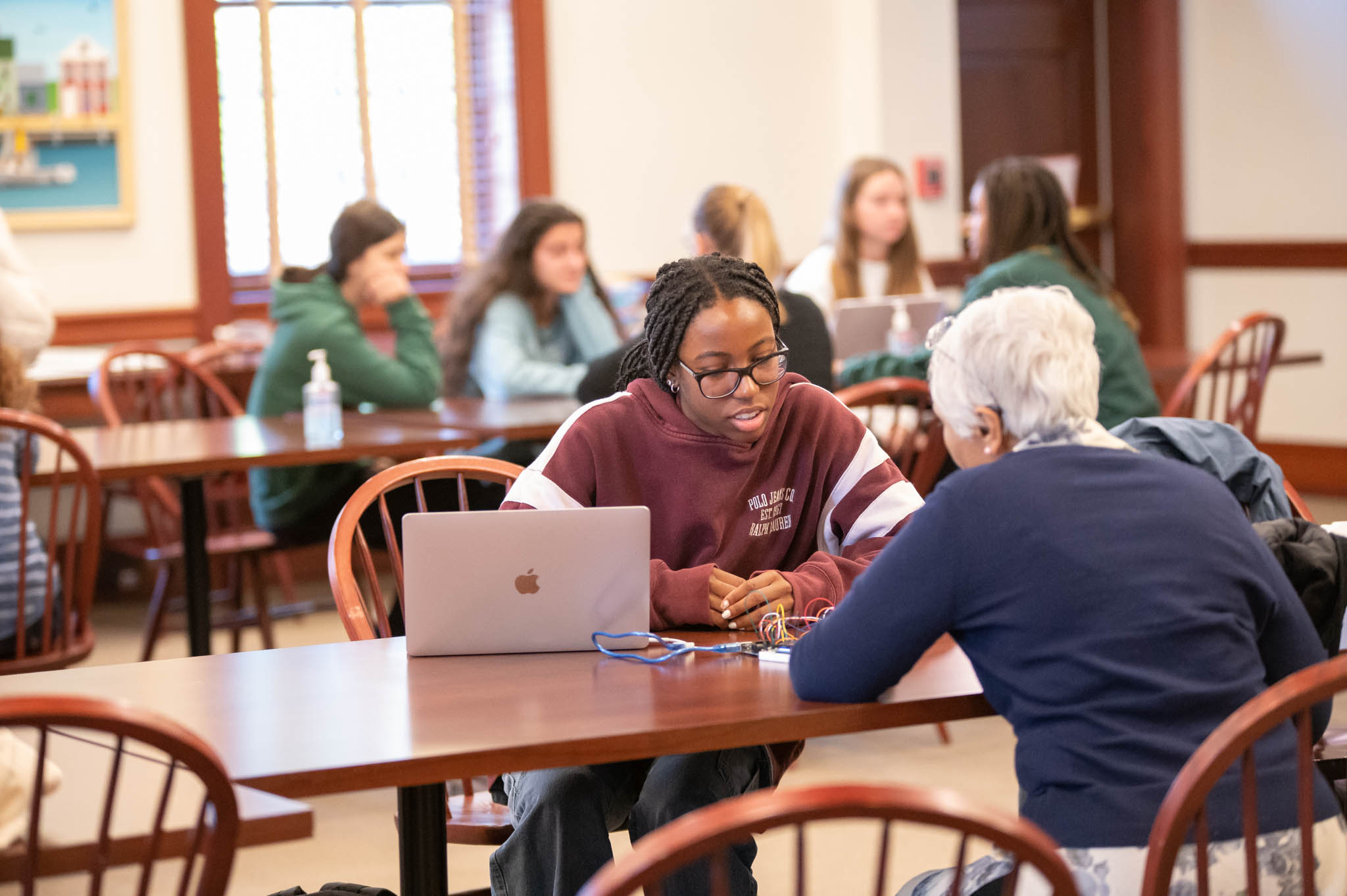By: Timothy Quinn
Chief Academic Officer and Dean of Faculty
Have you ever read a novel in which the historical context was of no importance? Do you ever do math that isn’t connected to something you are trying to find out? When you want to truly understand something, do you look at it solely from one perspective? Is there any significant problem in the world that can be solved by approaching it only through the lens of one academic discipline? I am guessing the answer to these questions is almost always “no.”
Why, then, are schools structured around single-discipline academic departments? Probably because that is the way it has always been. Well, it is time for things to change. If we want students to thrive in adulthood and have the skills they need to tackle complex problems, then we must organize their education in a way that helps them approach learning differently.
One of the easiest ways to do this is by focusing classes not on what would typically be considered “school” subjects — biology, algebra, literature, history — but instead on a problem. There are multitudes to choose from: topics as broad as climate change or economic inequality, or as narrow as the war in Ukraine or the ethics of artificial intelligence.
It’s easy to make these issues relevant to the students’ lives, and it’s important that we do so. We need the next generation to be thinking specifically about the challenges they will inevitably face and to be motivated to address them. This must be a central part of the curriculum — not something optional or on the periphery.
A pedagogical shift
Now some might say that students need core disciplinary knowledge before they can think about complex interdisciplinary problems. Nonsense. True and accurate information is essential, but I believe that knowledge is best gained in service to the solving of the problem at hand. Our task as educators should be to help students learn how to acquire the information they need to solve the problems that matter to them and the world. When they see that this knowledge is useful, then they will be motivated to learn more.
This type of pedagogical shift — abandoning academic departments for a curriculum organized around real-life challenges — is no small undertaking. A first step is to make top-level classes interdisciplinary. We have done that at Miss Porter’s School through the creation of our own Advanced Interdisciplinary Seminar (AIS) courses.
For example, students in our AIS Global intensive courses study the history, geography, language and culture of a particular region of the world and then travel to that place to study a problem. But our other AIS offerings, including AIS Calculus or AIS Physics, are more discipline-based. The key with these courses is not that they are uniting two or more subjects, but that students are studying those disciplines with an eye toward how they connect to issues and problems in the world.
Teaching an interdisciplinary curriculum means we educators need to think of ourselves differently, as well. Our role changes from one of an expert who pours knowledge into the students to that of a co-learner, curator, and guide — someone who helps them on their journey to understand the complexity of the world and become a lifelong learner.
How to Transition
At Miss Porter’s, we have established a set of interdisciplinary themes that we are encouraging all teachers to use in the planning of their courses. These themes are each connected to a timeless question and a set of pressing problems. If you’re an educator, these can be a starting point on the journey to a more integrated, interdisciplinary way of teaching.
| THEME | GUIDING QUESTION | POSSIBLE TOPICS |
|---|---|---|
| The Human Experience | What does it mean to be human? | Medicine, kinesiology, personal well-being, philosophy, art appreciation, psychology, resilience, death and dying, the written word |
| Information & Expression | How do we communicate and interpret information, ideas, and stories? | Spoken language, quantitative reasoning, performing arts, cultural expression, food, identity formation, creative writing, collective memory |
| Innovation & Sustainability | How can we ensure the well-being of future generations? | Climate change, the environment, ecological resilience, data collection and analysis, cultural adaptation and preservation, technological growth, entrepreneurship |
| Systems & Institutions | How do systems and institutions guide and affect our lives? | Government, economics, operations research, infrastructure, education, religion, nonprofit organizations, civics, laws, justice, ecology, the cosmos, sociology |
| Global Citizenship | How do we interact with the world around us and beyond? | Language studies, ethics, empathy, activism, collaboration, anthropology, international relations, travel, equity |
Colleges are shifting, too
High schools nervous about this shift will be happy to know that colleges are moving in the same direction. More and more of the recent college graduates that I interview as prospective teachers had an interdisciplinary major, and any quick Google search of “colleges with interdisciplinary programs” will reveal just how widespread this movement is. The world is interdisciplinary, and it is good to know that schools are finally catching up.

